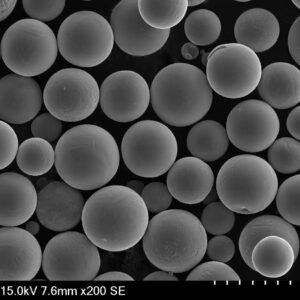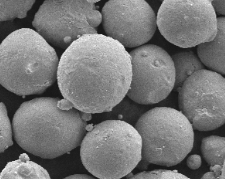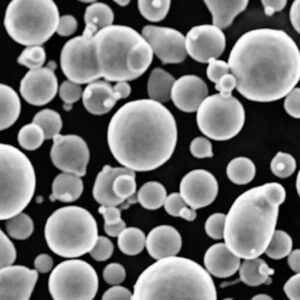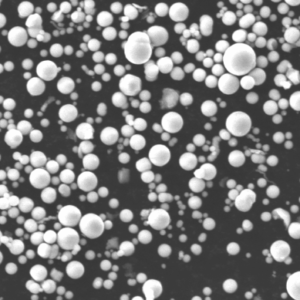Overview of Advanced Material Powders
Advanced material powders represent a significant leap in materials science, contributing to various industries, including aerospace, automotive, healthcare, and electronics. These powders are created through complex manufacturing processes and offer enhanced properties compared to traditional materials. In this guide, we’ll explore the specifics of different types of advanced material powders, their compositions, properties, applications, and more.
Types and Descriptions of Advanced Metal Powders
Understanding the different types of advanced metal powders is crucial for selecting the right material for specific applications. Here’s a detailed look at various metal powders and their unique attributes:
| Metal Powder Model | Composition | Properties | Characteristics |
|---|---|---|---|
| Titanium Powder | Ti | High strength-to-weight ratio, corrosion resistance | Lightweight, biocompatible, high melting point |
| Aluminum Powder | Al | Lightweight, good electrical conductivity | High reflectivity, non-magnetic, high thermal conductivity |
| Stainless Steel Powder | Fe, Cr, Ni, Mo | Corrosion resistance, high strength | Versatile, durable, temperature resistant |
| Copper Powder | Cu | Excellent electrical and thermal conductivity | Ductile, malleable, anti-bacterial |
| Nickel Powder | Ni | High corrosion resistance, high strength | Magnetic, high melting point |
| Cobalt Powder | Co | High strength, wear resistance | Magnetic, biocompatible |
| Iron Powder | Fe | Good magnetic properties, high strength | Abundant, versatile, cost-effective |
| Magnesium Powder | Mg | Extremely lightweight, high strength | Flammable, reactive, good machinability |
| Tungsten Powder | W | Very high melting point, high density | Hard, brittle, excellent thermal conductivity |
| Zinc Powder | Zn | Corrosion resistance, galvanizing properties | Low melting point, ductile |
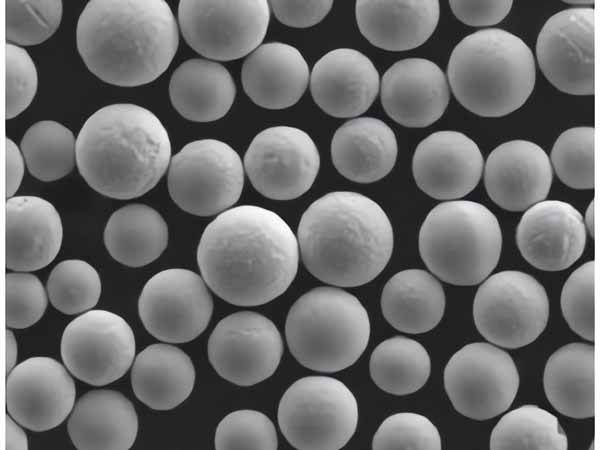
Composition of Advanced Material Powders
Each advanced material powder is designed with a specific composition to enhance its properties for various applications. Here’s a breakdown of the key elements and their roles:
| Metal Powder | Primary Elements | Additional Elements | Purpose of Additives |
|---|---|---|---|
| Titanium Powder | Ti | Al, V | Strength, hardenability |
| Aluminum Powder | Al | Si, Fe | Enhanced strength, improved casting |
| Stainless Steel Powder | Fe, Cr, Ni | Mo, Mn | Corrosion resistance, strength, ductility |
| Copper Powder | Cu | Sn, Zn | Improved strength, hardness |
| Nickel Powder | Ni | Cr, Mo | Corrosion resistance, high-temperature performance |
| Cobalt Powder | Co | Cr, Mo | Hardness, wear resistance |
| Iron Powder | Fe | C, Si, Mn | Strength, machinability |
| Magnesium Powder | Mg | Al, Zn | Corrosion resistance, strength |
| Tungsten Powder | W | Co, Ni | Hardness, toughness |
| Zinc Powder | Zn | Al, Cu | Strength, corrosion resistance |
Properties and Characteristics of Advanced Material Powders
The unique properties of advanced material powders make them suitable for a wide range of applications. Let’s dive into some specific characteristics:
| Property | Titanium | Aluminum | Stainless Steel | Copper | Nickel | Cobalt | Iron | Magnesium | Tungsten | Zinc |
|---|---|---|---|---|---|---|---|---|---|---|
| Density (g/cm³) | 4.5 | 2.7 | 7.8 | 8.96 | 8.9 | 8.9 | 7.86 | 1.74 | 19.25 | 7.14 |
| Melting Point (°C) | 1668 | 660 | 1400-1450 | 1084 | 1455 | 1495 | 1538 | 650 | 3422 | 419.5 |
| Electrical Conductivity | Moderate | High | Low | Very High | Moderate | Low | Low | Moderate | Low | Moderate |
| Thermal Conductivity | Moderate | High | Moderate | Very High | Moderate | Moderate | Moderate | High | Low | High |
| Corrosion Resistance | High | Moderate | Very High | High | Very High | High | Moderate | Moderate | Very High | High |
Applications of Advanced Material Powders
The versatility of advanced material powders allows them to be used in various industries. Here’s a look at some common applications:
| Metal Powder | Applications |
|---|---|
| Titanium Powder | Aerospace components, medical implants, sports equipment |
| Aluminum Powder | Automotive parts, packaging, electronics |
| Stainless Steel Powder | Kitchenware, automotive parts, medical instruments |
| Copper Powder | Electrical components, plumbing, coinage |
| Nickel Powder | Batteries, aerospace components, coatings |
| Cobalt Powder | Hard-facing alloys, medical implants, batteries |
| Iron Powder | Automotive parts, machinery, magnets |
| Magnesium Powder | Aerospace components, automotive parts, fireworks |
| Tungsten Powder | Cutting tools, electronics, aerospace components |
| Zinc Powder | Galvanizing, batteries, die-casting |
Grades and Specifications of Advanced Material Powders
Different grades and specifications of advanced material powders are available to meet specific industry standards. Here’s a detailed look at some of them:
| Metal Powder | Grade | Specification | Standards |
|---|---|---|---|
| Titanium Powder | Grade 1-5 | ASTM B348, AMS 4928 | ASTM, AMS |
| Aluminum Powder | 1100, 2024, 6061 | ASTM B209, AMS 4027 | ASTM, AMS |
| Stainless Steel Powder | 304, 316, 420 | ASTM A240, AMS 5501 | ASTM, AMS |
| Copper Powder | C11000, C12200 | ASTM B152, AMS 4500 | ASTM, AMS |
| Nickel Powder | N02201, N02200 | ASTM B160, AMS 5553 | ASTM, AMS |
| Cobalt Powder | CoCrMo, CoNiCrMo | ASTM F75, AMS 5844 | ASTM, AMS |
| Iron Powder | A1008, A1011 | ASTM A1008, AMS 5050 | ASTM, AMS |
| Magnesium Powder | AZ31B, AZ61A | ASTM B90, AMS 4375 | ASTM, AMS |
| Tungsten Powder | W1, W2 | ASTM B760, AMS 7890 | ASTM, AMS |
| Zinc Powder | Zamak 3, Zamak 5 | ASTM B86, AMS 2301 | ASTM, AMS |
Suppliers and Pricing Details of Advanced Material Powders
The pricing and availability of advanced material powders vary based on supplier and market conditions. Here are some common suppliers and pricing information:
| Metal Powder | Supplier | Price (USD/kg) | Notes |
|---|---|---|---|
| Titanium Powder | ATI Metals, VSMPO-AVISMA | 300-500 | Prices vary based on grade and purity |
| Aluminum Powder | Alcoa, Rio Tinto | 20-50 | Prices influenced by market demand |
| Stainless Steel Powder | Sandvik, Carpenter Technology | 50-100 | Prices vary based on alloy composition |
| Copper Powder | Aurubis, Glencore | 10-30 | Prices influenced by copper market |
| Nickel Powder | Vale, Norilsk Nickel | 50-150 | Prices vary based on market conditions |
| Cobalt Powder | Freeport-McMoRan, Glencore | 40-100 | Prices influenced by cobalt market |
| Iron Powder | Höganäs, Rio Tinto | 5-20 | Prices vary based on purity and grade |
| Magnesium Powder | US Magnesium, Dead Sea Magnesium | 20-50 | Prices influenced by market conditions |
| Tungsten Powder | China Tungsten, H.C. Starck | 100-300 | Prices vary based on purity and form |
| Zinc Powder | Teck Resources, Nexa Resources | 10-30 | Prices influenced by zinc market |
Comparing Pros and Cons of Advanced Material Powders
Selecting the right metal powder involves weighing the pros and cons. Here’s a comparative look at the advantages and limitations:
| Metal Powder | Advantages | Limitations |
|---|---|---|
| Titanium Powder | High strength, corrosion resistance, biocompatibility | High cost, difficult to process |
| Aluminum Powder | Lightweight, good conductivity, corrosion resistance | Lower strength compared to steel |
| Stainless Steel Powder | Corrosion resistance, high strength, durability | Higher cost, heavier than aluminum |
| Copper Powder | Excellent conductivity, antimicrobial properties | High cost, lower strength compared to some alloys |
| Nickel Powder | High corrosion resistance, high temperature performance | High cost, heavier than some alternatives |
| Cobalt Powder | High strength, wear resistance, biocompatibility | High cost, limited availability |
| Iron Powder | Cost-effective, versatile, good strength | Prone to rusting, lower corrosion resistance |
| Magnesium Powder | Extremely lightweight, good machinability | Flammable, less corrosion resistance |
| Tungsten Powder | Very high melting point, high density | Very brittle, difficult to process |
| Zinc Powder | Good corrosion resistance, versatile | Lower strength, can be brittle |
FAQ
What are advanced material powders?
Advanced material powders are finely divided materials made from metals or alloys, used for a variety of industrial applications due to their enhanced properties.
How are advanced material powders made?
These powders are typically made through processes such as atomization, chemical reduction, and mechanical milling. Each method has its advantages depending on the desired properties of the powder.
What industries use advanced material powders?
Industries such as aerospace, automotive, medical, electronics, and manufacturing extensively use advanced material powders for their unique properties.
Why is titanium powder preferred in aerospace?
Titanium powder is preferred in aerospace due to its high strength-to-weight ratio, corrosion resistance, and ability to withstand extreme temperatures.
What makes aluminum powder suitable for electronics?
Aluminum powder is lightweight, has excellent electrical and thermal conductivity, making it ideal for electronic components.
How does stainless steel powder benefit medical instruments?
Stainless steel powder is corrosion-resistant, durable, and can be sterilized, making it perfect for medical instruments.
Can copper powder be used in antimicrobial applications?
Yes, copper powder has natural antimicrobial properties, making it effective for applications where hygiene is critical.
What are the cost considerations for advanced material powders?
The cost of advanced material powders varies significantly based on the metal type, purity, and market conditions.
How does the purity of metal powder affect its performance?
Higher purity metal powders typically offer better performance characteristics, such as increased strength and corrosion resistance.
What safety measures are needed when handling advanced material powders?
Proper ventilation, protective clothing, and careful handling are necessary to prevent inhalation, skin contact, and fire hazards, especially with reactive powders like magnesium.
Conclusion
Advanced material powders play a critical role in modern industry, offering unique properties that enhance product performance and durability. From the aerospace sector to medical applications, these powders provide the materials needed to push technological boundaries. By understanding the various types, compositions, properties, and applications, you can make informed decisions about which advanced material powder is right for your needs. Whether you are looking for high strength, lightweight options like titanium and aluminum or require the high-temperature capabilities of tungsten and nickel, advanced material powders are at the forefront of material science innovations.


